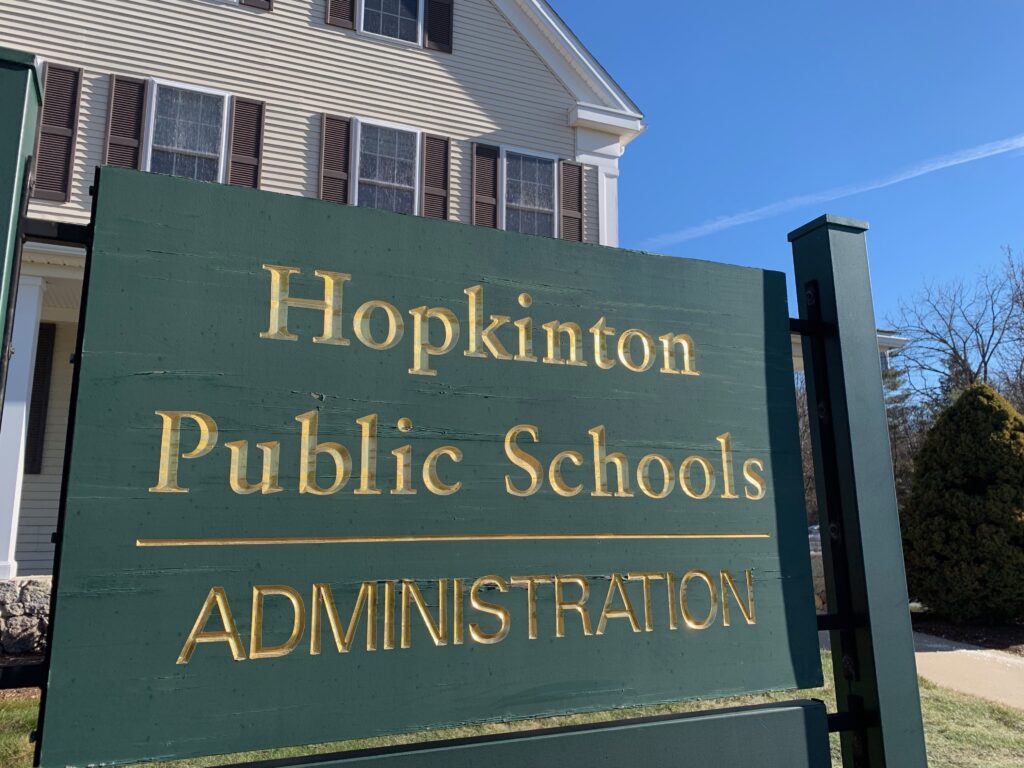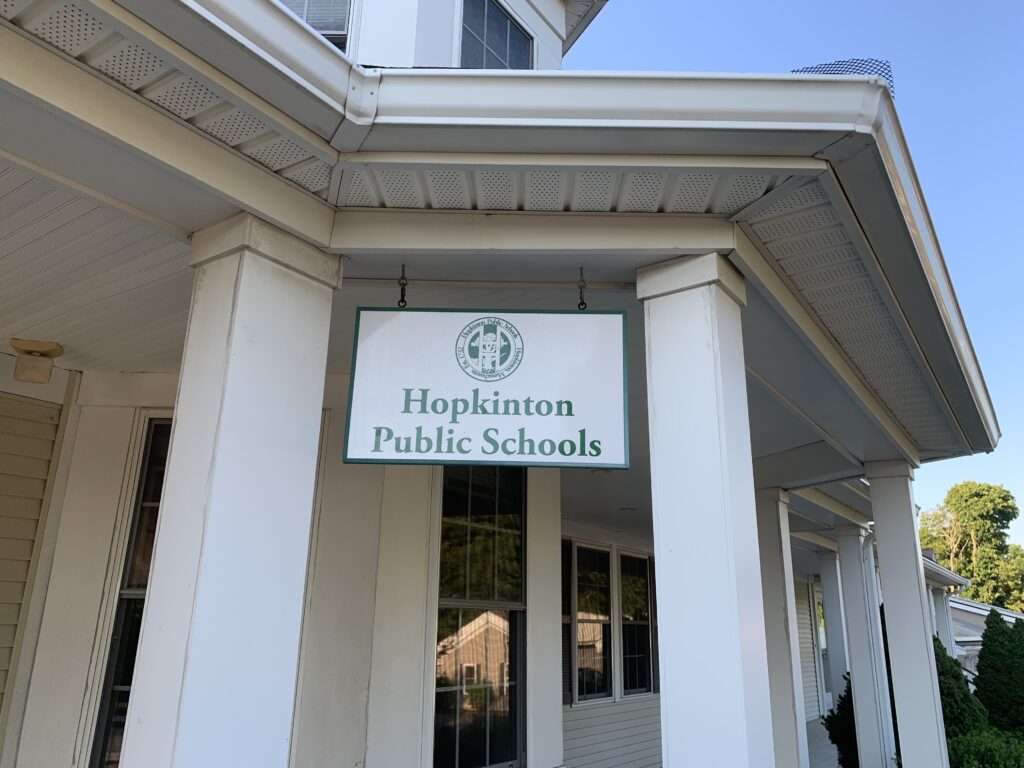Once again, Thursday’s School Committee meeting featured a public comment period when several speakers expressed concern about proposed reductions in occupational, physical and speech and language therapies.
It was followed by a presentation in which Superintendent Carol Cavanaugh and Director of Student Services Karen Zaleski gave the data and scheduling information that led to the belief that cuts could be made while still preserving the quality of the services.
At issue is a budget proposal that would cut 0.8 from physical therapy staffing, 0.8 from occupational therapy and 0.5 from speech therapy.
Hopkinton Teachers Association President Becky Abate challenged the data as “inaccurate” and said promises of no impact to students are “misleading.” She said that despite being given additional data and corrections by staff, administrators continue to present the data in a way that doesn’t reflect service needs.
Abate said in a statement that the district administrators used information provided in September prior to additional students entering the system and being assessed for the level of services they need.
She said the time needed for staff to evaluate and test students, consult with other educators, hold meetings on student progress and make assessments was not factored into the data.
Zaleski said that was not the case at all. The tasks performed by therapists outside of direct services to students were taken into consideration in the calculations, she said.
Superintendent Carol Cavanaugh noted in opening remarks that the district must be mindful of all the taxpayers in town and work with the Select Board to develop a responsible budget while still making a commitment to “put children at the center of all we do.”
Cavanaugh said she recognized it is not all about dollars and cents to the teachers and staff as well as parents in the audience because the cuts would affect colleagues, and emotions are involved.
She added that “civil dialogue” on the matter has been missing and she hoped to “open the door” to make that happen.
Cavanaugh said the numbers were derived by talking to team chairs and principals and there were no “hasty decisions” made, given that the process started in March.
Speaking earlier, HTA Vice President Jennifer Jordan urged the School Department to listen to the educators “when they tell you what they do, what they need and what will happen if reductions are made.”
She said administrators can’t ask fewer people to do more work and not expect there will be a negative effect on student progress.
Zaleski said that at no time was there a discussion about diminishing services. And she said it is a myth that special education (SPED) services are “understaffed.”
It also is untrue that there is a connection between a proposal to budget for a preschool director and SPED directors for K-4, Grades 6-12 and the proposed cuts to therapy services, she said.
Reducing hours for therapists is not designed to pay for the director positions, Zaleski said. She said that after three years of consulting services with different firms, the need for these directors was recommended for the betterment of students.
Zaleski reviewed a grid showing the gaps between how many hours were budgeted for services and how many were delivered. She said that even with the proposed cuts, there would be “wiggle room.”
Zaleski and Cavanaugh both emphasized that time for lunch, prep time, evaluations, meetings, testing, consulting and other tasks was included in the data they were showing.
“There are gaps in the schedules. … There’s opportunity and there’s room there,” Zaleski said.
She added that there are opportunities for students with special needs to gain skills in a variety of settings along with receiving that individual support.
“We’re not trying to hurt children. That’s never been our intent,” Zaleski said.
Compared with other similar districts, Cavanaugh noted, the case loads in Hopkinton are good. She also said she was concerned about the MCAS results among students with disabilities.
During the comment period, SEPAC Advisory Board member Erica Seekell identified herself as the proud parent of a child with disabilities and complex medical needs. She said the work the therapists do with her child is “vital,” describing how her child can run and play with her peers now, complete art projects and puzzles and continue to make gains in vocabulary enough to ask for snacks and books.
She expressed gratitude to the therapists, calling them her child’s “greatest cheerleaders.” Seekell added that the therapists keep her regularly updated via emails and check in when her child is sick and out of school, among other things.
Seekell said the personnel have empowered her child to “truly shine and exceed expectations” and questioned what kind of message it would send to the community if children with disabilities have their progress “impeded.”
She said it would seem like her child is not valued like the other children in school.
Zaleski said with the proposed reductions, it would be a matter of providing professional development and exploring other scheduling models in the future.
School Committee Vice Chair Amanda Fargiano asked Zaleski if she thought the staff levels would be sufficient in a few years’ time. While saying she believed so, Zaleski noted it is an annual budget process, and if changes are needed, she is not afraid to come back and ask.
School Committee member Jennifer Devlin said she appreciated the thorough data but still had a sense that there is a “disconnect” between the administrators’ information saying there are time gaps and folks on the job feeling something different based on the work they are doing.
School Committee member Holly Morand said that she is having a difficult time “bridging the gap” between the data presented and the very different views expressed in 48 emails and testimonials by parents and those on the job.
She said that the pandemic has escalated the mental and behavioral needs of students and it’s time to get together and “create a more integrative view of data.” Morand added she is always going to look at equity for the most vulnerable students.



















0 Comments